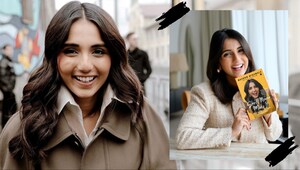Keeping Up With the Koreans: All You Need to Know About K-Beauty
And the 12-step skincare routine they follow—strictly.

Beauty is a religion in South Korea, a place where ‘good’ skin can accelerate your career and off-the-shelf nose jobs are part of growing up. The perfect face, according to Koreans, is translucently clear, free of any dark spots, blotches or even pores, and hyper-hydrated. They like to refer to it as ‘glass skin’ and, by Confucius, they all have it.
So how exactly do they do it? We’ve heard Koreans are scarily gung-ho about plastic surgery, and the highstreet tower-block surgery clinics, with life-sized electronic billboards of the various doctors displayed over reception desks, appear to bear this out. But that doesn’t explain the quality of their skin. Perhaps them having (as we are so often told) a 12-step skincare routine does—except when we try one of those at home, all we end up with is an empty wallet and an oily breakout.
“Skincare? Its like eating and sleeping to us,” says Christine Kang of popular K-colour (the K stands for ‘Korean’) brand Touch In Sol. “Mums put moisturiser on their babies’ faces, and daily sunscreen is just a basic.” In fact, skincare is a cultural thing. Alicia Yoon, a Korean-American who runs online K-Beauty emporium peachandlily.com, explains that well-being, health and beauty have always been part of the same conversation in Korea, making skincare a topic that is not seen as vain and inconsequential, but vital. As a result, skincare here is seen as a life-long project, as opposed to something you try after plenty of abuse has left you with lines and spots. It’s an approach that will warm any beauty director’s heart but it comes with its own problems, as slapping on shed loads of skincare from birth could potentially lead to product overload and ingredient clashes that over-enthusiastic beauty fans around the world have been suffering from.
It would be wrong to ignore make-up altogether in this story, because although Korean women abhor obvious layers of slap, they are magicians at wearing more than you think—invisibly. Unsurprisingly, this is thanks to the finest textures, imbued with skincare actives—this is the land of BB creams, cushion compacts and liquid-tint-everything, after all. Also unsurprisingly, makeup’s sole purpose is to convey radiance, health and youth, hence the blossom-stained lips, iridescent eyeliners and petal cheeks against that skin.
Here Comes the 12-Stepper (yes, they do this everyday!):
1. OIL CLEANSER
To remove makeup. A gel or micellar water will do, too.
2. WASH-OFF CLEANSER
To wash away dirt and pollution. Silky foams and milky jellies are popular.
3. TONER
A liquid with astringent botanicals, enzymes or mild acids to slay oil, dead skin and product build-up.
4. PEEL/SCRUB
Using plant cellulose or seed particles, this can be used in place of a toner.
5. ESSENCE (KOREANS CALL IT 'LOTION')
A hydrating liquid that preps skin for absorption or actives, often with probiotics or a skin-neutral pH5.
6. SERUM (KOREANS CALL IT 'ESSENCE', CONFUSINGLY)
A concentrate of problem-solving active ingredients in a hydrating base.
7. SHEET MASK
A thin sheet swimming in serum. Can be used in place of serum, especially at night.
8. MOISTURISER
Locks in serum with oils, humectants or both. Can be substituted with a super-plumping ‘sleeping pack’ overnight.
9. SPF50
Non-sticky broad-spectrum lotion, often with anti-pollutants.
10. PRIMER
A light, smoothing, pore-diffusing cream to anchor make-up.
11. BASE
A light but highly pigmented foundation or BB cream with SPF (yes, again).
12. EYE CREAM, NECK CREAM, LIP PROTECTANT
Add-ons, for those who want more.
By Ingeborg van Lotringen
more from Beauty

Typsy Beauty is changing the way you think about makeup

Masoom Minawala pens down a quintessential guide for every woman who wants to prove the world wrong

#AskTheTherapist: ‘Should I break ties with my toxic sister?’

5 zodiac signs that are compatible with Pisces

9 new restaurants to hit up on your next visit to Goa

Here's what keeping the lights on can do for your sex life

#MovingOut: Amidst loneliness and piles of laundry, I grew up

Here's how vacations can make or break your relationship

Here's how to not obsess over your crush

Here’s how to tell if you’re in a rebound relationship
